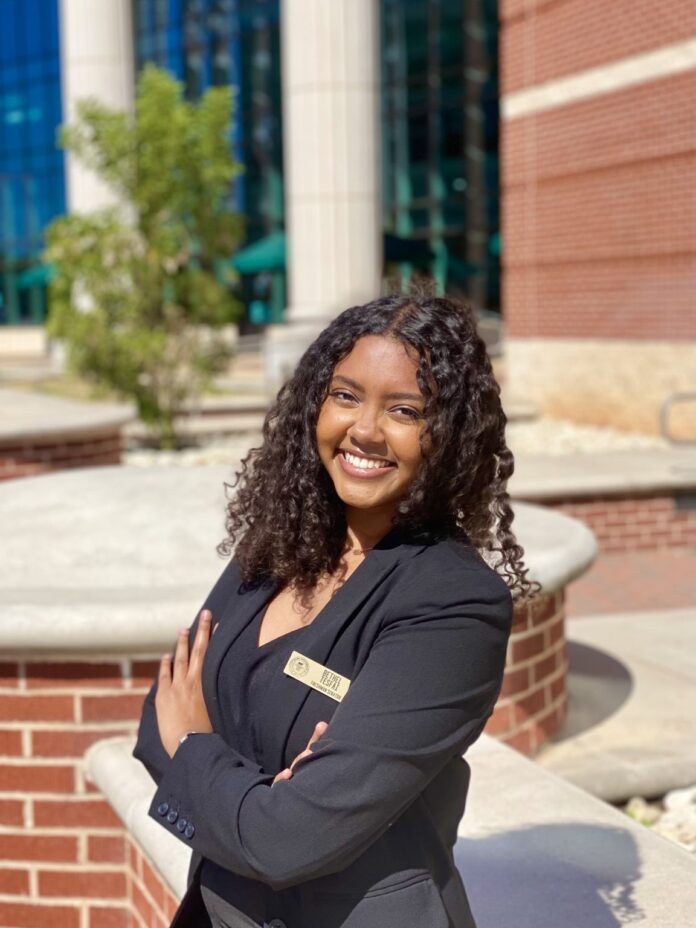
By Kalena Reynolds | Staff Writer
Following the 1954 Supreme Court case Brown v. the Board of Education — which began a decadeslong process of the racial integration of public schools — Baylor voluntarily adopted racial integration in 1963. While the university has made strides to embrace diversity and inclusion on campus since then, members of the Baylor community say there is always work to be done.
Plano senior Bethel Tesfai serves on the Baylor student senate. When she was looking at colleges, Tesfai said she loved Baylor’s proximity to her hometown and
its Christian messaging.
“Initially, as a senior in high school, I was wanting to just kind of further my faith in college and thought Baylor was a perfect place to do that,” Tesfai said.
When Tesfai first arrived at Baylor, she said she knew she wanted to get involved with student government to spread a message of inclusion and equity.
“These past four years, my whole platform has been increasing inclusion, increasing equity,” Tesfai said. “Whether that’s just awareness or through liberal policy, I’ve really worked hard to meet other students and learn about their experience.”
Tesfai said she feels students of color “need to be let through the door of faculty and administrative meetings.”
“These people who are able to make the decisions need to hear about the experiences that these students are living, because that’s the only way they’re going to understand and they’re going to be able to empathize with Black students,” Tesfai said.
Houston senior Makayla Williams is the president of the National Pan-Hellenic Council. She said she decided to come to Baylor because “it truly felt like a great place” for her to flourish and nurture her goals.
“Being able to come to a school that has professors that are generally willing to sit down with you and go over your work and help you refine your skills was definitely very special,” Williams said.
When Williams first came to Baylor, she said she immediately noticed that there weren’t a lot of students who looked like her or professors who represented a similar background. According to the 2022-2023 Common Data Set, of the 15,213 total undergraduate students at Baylor, 4.8% are Black or African American and non-Hispanic.
“It was really hard just trying to get a good grasp on what my identity is in college,” Williams said. “For me, I already came in with such a strong sense of identity, that sometimes it was really confusing to feel some type of wavering in that, because where is my community at Baylor?”
Williams said she feels Baylor has grown a lot in diversity, but a large component of inclusion is hindered by the voices of Black students not being heard
“I think a lot of it is some of us are sharing the same stories with the same people, and our stories aren’t spreading, and they’re not being heard by the right people,” Williams said. “We can recognize that, yes, Baylor has grown in diversity and inclusion in some ways, but there’s always room for improvement.”
Williams said there are many cultural parts of campus that go unseen.
“I really feel like the only cultural kind of space that we have is the NPHC garden,” Williams said. “A lot of people have told me it looks like a cemetery, doesn’t really look like a garden. And a lot of this is because we rely on facilities to upkeep that space. And so it can be a bit challenging sometimes with trying to have physical representations and things like that, because statues only do so much. Statues don’t always tell the full story.”
Williams said sharing more of the history of diversity and inclusion at Baylor is crucial, during all times of the year.
“One of my biggest dreams and biggest goals that I would love to see happen here on campus is having a multicultural affairs building on campus,” Williams said. “An actual physical space on campus where not just students of color but all students
can go and visit, [with] educational spaces where students can … learn different stories about our culture, about history.”





